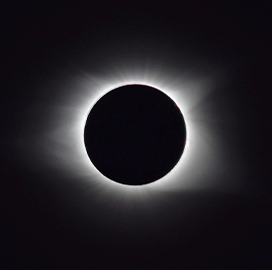
Satellite communication
NASA to Study Solar Eclipse’s Impact on Ionosphere Using Sounding Rockets
Three sounding rockets will lift off from NASA’s Wallops Flight Facility in Virginia on April 8, the day North America will experience a total solar eclipse.
The Atmospheric Perturbations around Eclipse Path sounding rockets, which will be launched at different times, will provide data to determine the effects of the sudden dimming of the sun on the ionosphere, an electrified region of the Earth’s upper atmosphere that reflects and modifies radio waves used for communication and navigation, NASA said.
The rockets will reach a maximum altitude of 260 miles and will each deploy four secondary instruments built by Embry-Riddle Aeronautical University and Dartmouth College, increasing the fleet of spacecraft measuring charged and neutral particle density and surrounding electric and magnetic fields.
The eclipse is expected to create disturbances that could interfere with communication signals, including those from satellites.
Aroh Barjatya, a professor of engineering physics at Embry-Riddle, leads the APEP mission. Barjatya said data gathered from the mission will enable researchers to better understand the ionosphere and create models to predict such disturbances and improve the operation of communications systems.

Category: Space




